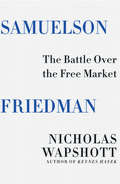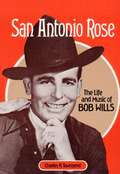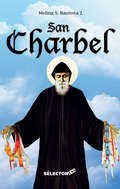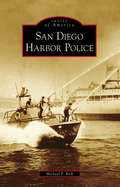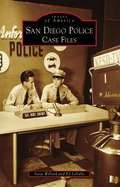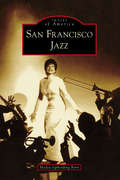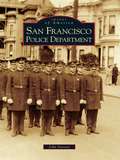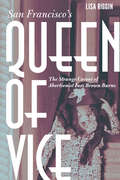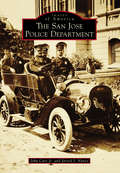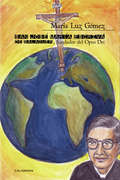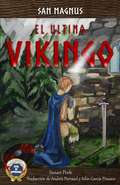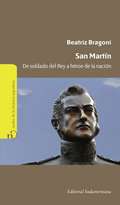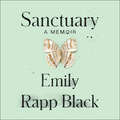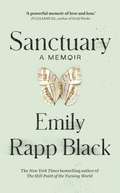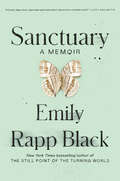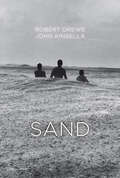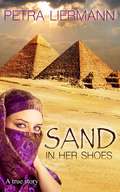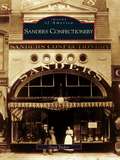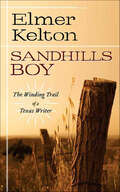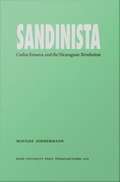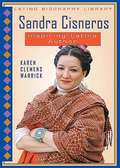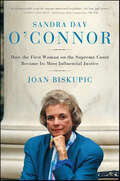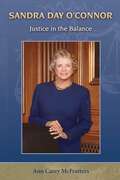- Table View
- List View
Samuelson Friedman: The Battle Over The Free Market
by Nicholas WapshottFrom the author of Keynes Hayek, the next great duel in the history of economics. In 1966 two columnists joined Newsweek magazine. Their assignment: debate the world of business and economics. Paul Samuelson was a towering figure in Keynesian economics, which supported the management of the economy along lines prescribed by John Maynard Keynes’s General Theory. Milton Friedman, little known at that time outside of conservative academic circles, championed “monetarism” and insisted the Federal Reserve maintain tight control over the amount of money circulating in the economy. In Samuelson Friedman, author and journalist Nicholas Wapshott brings narrative verve and puckish charm to the story of these two giants of modern economics, their braided lives and colossal intellectual battles. Samuelson, a forbidding technical genius, grew up a child of relative privilege and went on to revolutionize macroeconomics. He wrote the best-selling economics textbook of all time, famously remarking "I don’t care who writes a nation’s laws—or crafts its advanced treatises—if I can write its economics textbooks." His friend and adversary for decades, Milton Friedman, studied the Great Depression and with Anna Schwartz wrote the seminal books The Great Contraction and A Monetary History of the United States. Like Friedrich Hayek before him, Friedman found fortune writing a treatise, Capitalism and Freedom, that yoked free markets and libertarian politics in a potent argument that remains a lodestar for economic conservatives today. In Wapshott’s nimble hands, Samuelson and Friedman’s decades-long argument over how—or whether—to manage the economy becomes a window onto one of the longest periods of economic turmoil in the United States. As the soaring economy of the 1950s gave way to decades stalked by declining prosperity and "stagflation," it was a time when the theory and practice of economics became the preoccupation of politicians and the focus of national debate. It is an argument that continues today.
Samurai among Panthers: Richard Aoki on Race, Resistance, and a Paradoxical Life (Critical American Studies)
by Diane C. FujinoAn iconic figure of the Asian American movement, Richard Aoki (1938–2009) was also, as the most prominent non-Black member of the Black Panther Party, a key architect of Afro-Asian solidarity in the 1960s and &’70s. His life story exposes the personal side of political activism as it illuminates the history of ethnic nationalism and radical internationalism in America. A reflection of this interconnection, Samurai among Panthers weaves together two narratives: Aoki&’s dramatic first-person chronicle and an interpretive history by a leading scholar of the Asian American movement, Diane C. Fujino. Aoki&’s candid account of himself takes us from his early years in Japanese American internment camps to his political education on the streets of Oakland, to his emergence in the Black Panther Party. As his story unfolds, we see how his parents&’ separation inside the camps and his father&’s illegal activities shaped the development of Aoki&’s politics. Fujino situates his life within the context of twentieth-century history—World War II, the Cold War, and the protests of the 1960s. She demonstrates how activism is both an accidental and an intentional endeavor and how a militant activist practice can also promote participatory democracy and social service. The result of these parallel voices and analysis in Samurai among Panthers is a complex—and sometimes contradictory—portrait of a singularly extraordinary activist and an expansion and deepening of our understanding of the history he lived.
San Antonio Rose: The Life And Music Of Bob Wills
by Charles R. TownsendThe virtual creator of Western Swing, Bob Wills, gets his due from Charles R. Townsend's SAN ANTONIO ROSE, a thoroughly researched study of the bandleader's life and times. Born to a large family of fiddlers, Wills gained much of his musical knowledge from the black workers the family picked cotton with and sometimes employed; he credited the blues with lending his brand of country dance music much of its originality. After various truncated careers, including farming, a turn at horse racing, and some time spent as a barber, Wills finally turned professional when his band performed weekly radio spots for a flour company as the Light Crust Doughboys, whose popularity led to a name change and the birth of the legendary Texas Playboys. Wills' music was an eclectic mix of jazz, blues, Mexican music, and West Texas fiddling that attempted to sound like a jazz dance band while using the instruments common to country music; the resulting mix was an irresistible hybrid that would outlast many of the jazz swing bands of the 1940s. Townsend's discerning overview of Wills' career and musical influence is an authoritative and entertaining biography of this celebrated country music original. Above synopsis from Allbris.com http://www.alibris.com/books/isbn/0252004701%20025201362X/San%20Antonio%20Rose:%20The%20Life%20and%20Music%20of%20Bob%20Wills The book's author, CHARLES R. TOWNSEND won a Grammy Award in 1975 for his brochure notes accompanying United Artists' release of For the Last Time, the last recording session of Bob Wills and his Texas Playboys.
San Charbel
by Melina S. Bautista J.En este novedoso libro, Melina nos presenta la vida de San Charbel, sus milagros, devociones, sacramentales, crónicas de sus celebraciones y de experiencias de sus seguidores, que inflaman el corazón de los creyentes. Todo lo que los devotos del santo libanés desearían saber para aumentar su conocimiento y devoción, lo encontrarán en este volumen. Tienes en tus manos una obra que, sin duda, será un instrumento que te ayudará a orar y enriquecer tu vida cristiana.
San Diego Harbor Police (Images of America)
by Michael P. RichThe San Diego Harbor Police Department has proudly provided more than 50 years of law enforcement. From its humble beginnings as a small security force formed after World War II to protect San Diego imports to the modern and sophisticated police force it is today, the San Diego Harbor Police Department serves as a shining example of the exciting and important role law enforcement plays in the development of a busy 21st-century city. Through a stunning collection of never-before-seen photographs, this book tells the story of the officers who have served and protected one of America's most historic and vital harbors. History lovers, police aficionados, and San Diego locals and visitors will be fascinated by the photographs within, which document the department's history from 1934 through its 1962 transition into the San Diego Unified Port District of today.
San Diego Police: Case Files (Images of America)
by Ed Lavalle Steve WillardA Pacific Coast metropolis famous for beautiful beaches and perfect weather and an American municipality since 1850, San Diego is America's eighth-largest city. Known as America's "Finest City," it contains a wealth of history--evolutionary as well as revolutionary--in its crime files. Among those are the founder of the California wine industry, Judge Roy Bean, a black officer before the Emancipation Proclamation, a 19th-century Native American police chief, and women who had the power to arrest before they had the right to vote. Major incidents include massive floods, civil unrest, wildfires, and some of the largest police gun battles in history. San Diego also witnessed mass murder, America's first major school shooting, the worst aviation disaster in American history, and the deadliest streets, per capita, to police. How the San Diego Police Department (SDPD) handled it all became textbook for many other police agencies.
San Francisco Jazz
by Medea Isphording BernSan Francisco is probably best known for its hills, ubiquitous fog, dungeness crab and the Golden Gate Bridge. But jazz music's threads are similarly woven into the fabric of the city and its environs. Whether performed in renowned clubs like So Different, Jimbo's Bop City, Black Hawk, and the Jazz Workshop or in halls like the Primalon Ballroom and Great American Music Hall, jazz has infused the city from the Barbary Coast to the Fillmore, thrilling audiences for over a century. San Franciscans have grooved to and incubated scores of jazz acts, hot and cool, raucous and contemplative. That tradition continues today.
San Francisco Police Department (Images of America)
by John GarveyThe officers of the San Francisco Police Department would be the first to tell you that police work in this city is nothing like Dirty Harry, The Streets of San Francisco, or Nash Bridges. It's a gritty reality, occasionally infused with glamour, but always characterized by the innovation and unusual proceedings found as a matter of course in this unique city. The department was established in 1849, when the population surge from the Gold Rush created a desperate need for law enforcement. An initial 35-member force was formed to protect over 20,000 residents. Since then, the SFPD has presided over notorious events, including the case of the Zodiac Killer, Zebra Murders, the Patty Hearst Hibernia Bank robbery, the 1975 assassination attempt on President Gerald Ford, and the Golden Dragon Restaurant and 101 California Street Massacres. While the SFPD story includes a gruesome and sometimes scandalous past, its dedicated officers continue to provide a positive and invaluable service to the diverse metropolitan community of San Francisco.
San Francisco's Queen of Vice: The Strange Career of Abortionist Inez Brown Burns
by Lisa RigginSan Francisco’s Queen of Vice uncovers the story of one of the most skilled, high-priced, and corrupt abortion entrepreneurs in America. Even as Prohibition was the driving force behind organized crime, abortions became the third-largest illegal enterprise as state and federal statutes combined with changing social mores to drive abortionists into hiding. Inez Brown Burns, a notorious socialite and abortionist in San Francisco, made a fortune providing her services to desperate women throughout California. Beginning in the 1920s, Burns oversaw some 150,000 abortions until her trial and conviction brought her downfall. In San Francisco’s Queen of Vice, Lisa Riggin tells the story of the rise and fall of San Francisco’s “abortion queen” and explores the rivalry between Burns and the city’s newly elected district attorney, Edmund G. “Pat” Brown (father of the present governor of California). Pledging to clean up the graft-ridden city, Brown exposed the hidden yet not-so-secret life of backroom deals, political payoffs, and corrupt city cops. Through the arrest, prosecution, and conviction of Burns, Brown used his success as a stepping-stone for his political rise to California’s governor’s mansion. Featuring an array of larger-than-life characters, Riggin shows how Cold War domestic ideology and the national quest to return to a more traditional America quickly developed into a battle against internal decay. Based on a combination of newspaper accounts, court records, and personal interviews, San Francisco’s Queen of Vice reveals how the drama played out in the life and trial of one of the wealthiest women in California history.
San Jose Police Department, The (Images of America)
by Jarrod J. Nunes John Carr Jr.Originally known as San Jose de Guadalupe, San Jose was ruled by Mexico until 1848, when, after the Mexican-American War, California joined the United States of America. In 1849, the newly elected government appointed a chief of police, and the San Jose Police Department was born. Its mission has been to respond to the distinctive needs of the community from the early agricultural age to today's high technology age. The San Jose Police Department has been a leader in law enforcement technology and training and is considered a model for modern police departments. Today, with a thousand sworn officers and 200 support personnel, the San Jose Police Department serves over a million citizens in the city and polices an area of over 180 square miles. The wonderful photographs compiled over the department's history illustrate the efforts of the hundreds of men and women who built the San Jose Police Department into one of the premier law enforcement agencies in the United States.
San José María Escrivá de Balaguer, fundador del Opus Dei
by María Luz GómezLo vio al instante: cómo sería en el futuro. La biografía de este santo de nuestros días tiene un gran interés. Optimista y audaz, fundó el Opus Dei con 26 años, gracia de Dios y buen humor. «Porque él y la Obra fueron tratados a patadas, se esparcieron por todo el mundo», comentó, años después de la expansión.
San Magnus, El Último Vikingo
by Susan PeekRegresamos en el tiempo 900 años, a las feroces y desoladas tierras del norte, donde los nórdicos reinan con el hacha y la espada. Un rey agonizante, una última voluntad escandalosa, sus herederos divididos con un juramento de sangre… En esta vertiginosa nueva novela de la popularísima Susan Peek, el conflicto se desarrolla entre Magnus Erlendson, un heroico joven príncipe inflamado por el amor a Dios, y su desterrado primo Hakon, quien culpa a Magnus de su exilio del reino. Lo que sigue es una historia de traición y venganza, valentía y perdón, en tanto Magnus procura restaurar el usurpado reino de su padre a sus legítimos dueños. ¡Entretenida e inspiradora de principio a fin, de lectura obligatoria para los entusiastas de la vida de santos que jamás supimos que existieron!
San Martín: De soldado del rey a héroe de la Nación
by Beatriz BragoniDe la colección Nudos de la Historia Argentina dirigida por JorgeGelman, una narración que recupera un motivo clásico de nuestrahistoriografía pero que lo restituye a la luz de contribucionesrecientes que han mejorado la comprensión del momento revolucionario, ydel ciclo de guerras que trastornaron por completo los cimientos delpoder imperial en América en el siglo XIX. .¿Cómo se transformó San Martín de oficial de los ejércitos españoles enjefe de los ejércitos americanos contra la dominación realista? ¿Cómo seforjó el proyecto libertador más poderoso de Sudamérica? ¿Por qué loabandonó en el último trayecto y terminó su vida en Europa? ¿Cuál fue laoperación intelectual que convirtió a San Martín en el héroe máximo delpanteón argentino? Estas y otras preguntas han acompañado cada etapa enla que este libro fue pensado y escrito.En estas páginas el lector se enfrentará a un recorridovital que permite capturar la potencia de la Revolución y de las guerraspor ella disparadas no solo en el desmoronamiento del orden social ypolítico previo a su emergencia, sino también en la creación deidentidades políticas que habría de refutar la utopía de hacer unaPatria americana tal como la habían imaginado sus más decididospromotores.Para la colección Nudos de la Historia Argentina hemos pedido ahistoriadores de primer nivel que escriban libros sólidos pero a la vezatractivos, susceptibles de ser leídos ydisfrutados por personas interesadas en la historia, aunque carezcan deuna formación universitaria en la disciplina. Esperamos estar a laaltura del desafío.
Sanctuary
by Emily RappFrom the New York Times bestselling author of The Still Point of the Turning World - an incisive memoir about how she came to question and redefine the concept of resilience after the trauma of her first child's death.'A lyrical, deep, funny, eyes-wide-open, ultimately comforting book. I adored it, and - if you are searching for how to live in a broken world - so will you' - Lucy Kalanithi'A book of rare power and grace... Reading this extraordinarily thoughtful writer and her luminous prose was, for me, sanctuary' - Will Schwalbe, New York Times bestselling author of The End of Your Life Book Club'Every once in a while, a book comes along that ushers us to the very center of a profound truth that we don't so much learn, as recognize. Emily Rapp takes us there in SANCTUARY' - Dani Shapiro, New York Times bestselling author of InheritanceA searing memoir of a mother's love, the meaning of resilience and the possibilities of life after grief from the New York Times bestselling author of The Still Point of the Turning World.'Congratulations on the resurrection of your life,' a colleague wrote to Emily Rapp Black when she announced the birth of her second child. The line made Emily pause. Her first child, Ronan, had died before he turned three years old from Tay-Sachs disease, an experience she wrote about in her first book, The Still Point of the Turning World. Since that time her life had changed utterly: she had left the marriage that fractured under the terrible weight of her son's illness, remarried the love of her life, had a flourishing career, and given birth to a healthy baby girl. But she rejected the idea that she was leaving her old life behind - that she had, in the manner of the mythical phoenix, risen from the ashes and been reborn into a new story, when she carried so much of her old story with her. More to the point, she wanted to carry it with her. Everyone she met told her she was resilient, strong, courageous in ways they didn't think they could be. But what did these words mean, really?Sanctuary is an attempt to unpack the various notions of resilience that we carry as a culture. Drawing on contemporary psychology, neurology, etymology, literature, art and self-help, Emily Rapp Black shows how we need a more complex understanding of this concept when applied to stories of loss and healing. Interwoven with lyrical, unforgettable personal vignettes from her life as a mother, wife, daughter, friend and teacher, Rapp Black creates a stunning tapestry that is full of wisdom and insight.(P) 2021 Penguin Random House Audio
Sanctuary: A Memoir
by Emily Rapp'A powerful memoir of love and loss, which are two sides of the same coin' - Julia Samuel, bestselling author of Grief Works and This Too Shall Pass'A lyrical, deep, funny, eyes-wide-open, ultimately comforting book. I adored it, and - if you are searching for how to live in a broken world - so will you' - Lucy Kalanithi'A book of rare power and grace... Reading this extraordinarily thoughtful writer and her luminous prose was, for me, sanctuary' - Will Schwalbe, New York Times bestselling author of The End of Your Life Book Club*NYT EDITORS' CHOICE*A searing memoir of a mother's love, the meaning of resilience and the possibilities of life after grief from the New York Times bestselling author of The Still Point of the Turning World.'Congratulations on the resurrection of your life,' a colleague wrote to Emily Rapp Black when she announced the birth of her second child. The line made Emily pause. Her first child, Ronan, had died before he turned three years old from Tay-Sachs disease, an experience she wrote about in her first book, The Still Point of the Turning World. Since that time her life had changed utterly: she had left the marriage that fractured under the terrible weight of her son's illness, remarried the love of her life, had a flourishing career, and given birth to a healthy baby girl. But she rejected the idea that she was leaving her old life behind - that she had, in the manner of the mythical phoenix, risen from the ashes and been reborn into a new story, when she carried so much of her old story with her. More to the point, she wanted to carry it with her. Everyone she met told her she was resilient, strong, courageous in ways they didn't think they could be. But what did these words mean, really?Sanctuary is an attempt to unpack the various notions of resilience that we carry as a culture. Drawing on contemporary psychology, neurology, etymology, literature, art and self-help, Emily Rapp Black shows how we need a more complex understanding of this concept when applied to stories of loss and healing. Interwoven with lyrical, unforgettable personal vignettes from her life as a mother, wife, daughter, friend and teacher, Rapp Black creates a stunning tapestry that is full of wisdom and insight.'Every once in a while, a book comes along that ushers us to the very center of a profound truth that we don't so much learn, as recognize. Emily Rapp takes us there in SANCTUARY' - Dani Shapiro, New York Times bestselling author of Inheritance'An absolute marvel. As a writer, a mother, and woman, Black is a profound inspiration-not because she's fearless but because she's courageous. To understand the distinction, read this beautiful book.' -Bret Anthony Johnston, New York Times bestselling author of Remember Me Like This'Not since When Breath Becomes Air has a memoir conveyed such profound loss, alongside such luminous and life-affirming love.' Adrienne Brodeur, author of Wild Game
Sanctuary: A Memoir
by Emily Rapp BlackFrom the New York Times bestselling author of The Still Point of the Turning World comes an incisive memoir about how she came to question and redefine the concept of resilience after the trauma of her first child&’s death. &“A book of rare power and grace . . . Reading this extraordinarily thoughtful writer and her luminous prose was, for me, sanctuary.&”—Will Schwalbe, author of The End of Your Life Book Club&“Congratulations on the resurrection of your life,&” a colleague wrote to Emily Rapp Black when she announced the birth of her second child. The line made Rapp Black pause. Her first child, a boy named Ronan, had died from Tay-Sachs disease before he turned three years old, an experience she wrote about in her second book, The Still Point of the Turning World. Since that time, her life had changed utterly: She left the marriage that fractured under the terrible weight of her son&’s illness, got remarried to a man who she fell in love with while her son was dying, had a flourishing career, and gave birth to a healthy baby girl. But she rejected the idea that she was leaving her old life behind—that she had, in the manner of the mythical phoenix, risen from the ashes and been reborn into a new story, when she still carried so much of her old story with her. More to the point, she wanted to carry it with her. Everyone she met told her she was resilient, strong, courageous in ways they didn&’t think they could be. But what did those words mean, really? This book is an attempt to unpack the various notions of resilience that we carry as a culture. Drawing on contemporary psychology, neurology, etymology, literature, art, and self-help, Emily Rapp Black shows how we need a more complex understanding of this concept when applied to stories of loss and healing and overcoming the odds, knowing that we may be asked to rebuild and reimagine our lives at any moment, and often when we least expect it. Interwoven with lyrical, unforgettable personal vignettes from her life as a mother, wife, daughter, friend, and teacher, Rapp Black creates a stunning tapestry that is full of wisdom and insight.
Sand
by John Kinsella Robert DreweA collection of prose, poetry, and memoir, this collaboration celebrates the profound effect environment has on our stories, assumptions, and geographical reckonings, just as it evokes childhood nostalgia and a sense of place. In a dialogue of perceptions, two of Australia’s foremost authors explore a common geography and memories—both cultural and personal—as they consider the theme of “sand” from intimate, geological, and historical points of view.
Sand in her shoes: A true story
by Petra LiermannAt the age of 30, Petra emigrated to Egypt because she saw her destiny neither in Germany nor in the public service. Years before she had met her soul mate there, whom she disdained. Later on she met her future husband Sayed, with whom she led a mostly very harmonious marriage for six years. The happiness became perfect with the birth of their daughter, until Petra found out that her husband had made a mistake that had grave consequences for their lives: Sayed had to marry his "misstep" and a time of suffering, violence and disappointed hopes began. This culminated not only in Petra's flight from Egypt to save the life of her daughter. The true story shows the often painful path of self-discovery and love for oneself and life. After Petra divorced her husband, his threats continued. Back in Germany, telephone terror and death threats, also against friends and family members, followed - until today.
Sanders Confectionery (Images of America)
by Greg TaskerFor more than 130 years, there has been no sweeter word in Detroit than Sanders. The venerable confectioner was once as much a part of Detroit's streetscape as the Big Three, Hudson's, and Coney Islands. Sanders was more than just an ice-cream and candy shop. A Detroit icon, it served a fountain of memories for generations. Detroiters stood two and three deep behind lunch counters for tuna or egg salad sandwiches, devil's food buttercream "bumpy"cake, hot fudge sundaes, and Sanders' signature dessert--hot fudge cream puffs. As Detroit boomed, so did Sanders. At its peak, the company boasted more than 50 stores, with its products available in as many as 200 supermarkets. The Sanders story began in Chicago, where Fred Sanders opened his first shop. A series of misfortunes prompted him to relocate to Detroit, where he began selling his confections on Woodward Avenue. Business grew steadily, and by the early 1900s, he had opened other shops along Woodward and elsewhere in Detroit. The Motor City nearly lost Sanders in the mid-1980s, but its desserts shops have begun resurfacing, thanks to another Detroit institution, Morley Brands LLC, which bought the Sanders brand.
Sandhills Boy: The Winding Trail of a Texas Writer
by Elmer Kelton“[A] charming memoir of renowned western novelist Kelton’s early years in the saddle, at the desk and in the trench . . . a pleasure through and through.” —Kirkus ReviewsVoted the “Best Western writer of all time” by his peers, Elmer Kelton wrote fifty novels that form a testament and tribute to the American West.But who is that Texas gentleman with the white Stetson and rimless eyeglasses whose friendly face appears on so many book jackets?Sandhills Boy is Kelton’s memoir, a funny and poignant story of “a freckle-faced country boy, green as a gourd, a sheep ready to be sheared,” growing up in the wild, dry, sandhills of West Texas. The son of a working cowboy and ranch foreman, Elmer was expected to follow in his father’s footsteps but learned at an early age that he had no talents in the cowboy’s trade. Buck Kelton said Elmer was “slow as the seven-year itch,” and reluctantly supported his son’s decision to become a student at the University of Texas, and, eventually, a journalist and writer.Kelton’s life in ranch and oil patch Texas during the Great Depression is told with warm nostalgic humor animated with stories of the cowboys and their wives and kids who gave the time and place its special flavor. He writes with great feeling of his service in WW2 in France, Germany, and Czechoslovakia, and the romantic circumstances in which his life changed in the village of Ebensee, Austria.“The most beloved western writer alive recounts his own story of growing up in Depression-era west Texas.” —Booklist
Sandinista: Carlos Fonseca and the Nicaraguan Revolution
by Matilde Zimmermann"A must-read for anyone interested in Nicaragua--or in the overall issue of social change. "--Margaret Randall, author of SANDINO'S DAUGHTERS and SANDINO'S DAUGHTERS REVISITED Sandinista is the first English-language biography of Carlos Fonseca Amador, the legendary leader of the Sandinista National Liberation Front of Nicaragua (the FSLN) and the most important and influential figure of the post-1959 revolutionary generation in Latin America. Fonseca, killed in battle in 1976, was the undisputed intellectual and strategic leader of the FSLN. In a groundbreaking and fast-paced narrative that draws on a rich archive of previously unpublished Fonseca writings, Matilde Zimmermann sheds new light on central themes in his ideology as well as on internal disputes, ideological shifts, and personalities of the FSLN. The first researcher ever to be allowed access to Fonseca's unpublished writings (collected by the Institute for the Study of Sandinism in the early 1980s and now in the hands of the Nicaraguan Army), Zimmermann also obtained personal interviews with Fonseca's friends, family members, fellow combatants, and political enemies. Unlike previous scholars, Zimmermann sees the Cuban revolution as the crucial turning point in Fonseca's political evolution. Furthermore, while others have argued that he rejected Marxism in favor of a more pragmatic nationalism, Zimmermann shows how Fonseca's political writings remained committed to both socialist revolution and national liberation from U. S. imperialism and followed the ideas of both Che Guevara and the earlier Nicaraguan leader Augusto Csar Sandino. She further argues that his philosophy embracing the experiences of the nation's workers and peasants was central to the FSLN's initial platform and charismatic appeal.
Sandra Cisneros: Inspiring Latina Author
by Karen Clemens WarrickDiscusses the life of Latina author Sandra Cisneros, including her childhood in Chicago, her path to becoming an accomplished author, and her work in the Latino community.
Sandra Day O'Connor: How the First Woman on the Supreme Court Became Its Most Influential Justice
by Joan Biskupic“Sandra Day O’Connor takes you behind the closed doors of the Supreme Court to reveal how Justice O’Connor helped craft landmark decisions on abortion, affirmative action, and a host of other critical issues. Joan Biskupic has broken new ground in reporting on O’Connor’s life and historic role on the high court. This lively, fast-paced account will make people rethink how they view this extraordinary woman and her fellow justices. An indispensable read for anyone interested in politics, the law, and power as exercised by one of the most fascinating women of our time.” -Andrea MitchellSandra Day O'Connor, America's first woman justice, became the axis on which the Supreme Court turned. She was called the most powerful woman in America, and it was often said that to gauge the direction of American law, one need look only to O'Connor's vote. Then, just one year short of a quarter century on the bench, she surprised her colleagues and the nation by announcing her retirement.Drawing on information from once-private papers of the justices, hundreds of interviews with legal and political insiders, and the insight gained from nearly two decades of covering the Supreme Court, Joan Biskupic examines O'Connor's remarkable career, providing an in-depth account of her transformation from tentative jurist to confident architect of American law. The portrait that emerges is of a complex and multifaceted woman: lawyer, politician, legislator, and justice, as well as wife, mother, A-list society hostess, and competitive athlete. To all appearances, she was the polite lady in pearls, handbag on her arm. But in the back rooms of politics and the law, she was a determined, focused strategist. O'Connor was the feminist who, rather than rebel against the male-dominated system, worked from within -- and succeeded.As Biskupic demonstrates, Justice O'Connor became much more than a "first." During her twenty-four-year tenure, she wrote the decisions on some of the most controversial social battles of our time. O'Connor's tie-breaking opinions on issues such as abortion rights, affirmative action, the death penalty, and religious freedom will have a lasting effect far into the future. O'Connor also cast one of the five votes that cut off the Florida recounts and allowed George W. Bush to take the White House in the 2000 contested presidential election. With an eye to the American people and a keen sense of public attitudes, she worked behind the scenes to shape the law and transform the legal standards by which future cases will be decided.From O'Connor's isolated upbringing on the Lazy B ranch in Arizona through her time as a state legislator to her rise as a justice -- along the way confronting her own personal challenges and crises, including breast cancer -- Biskupic presents a vivid, astute depiction of the justice -- and of the woman beneath the black robe. In so doing, Sandra Day O'Connor also provides an unprecedented look inside the exclusive, famously secretive High Court.
Sandra Day O'Connor: Justice for All (Women of Our Time)
by Beverly GhermanFrom the Book Jacket: Sandra Day O'Connor is one of the most influential-and controversial-women of today. In 1981, she was the first woman named to the United States Supreme Court, and since then, her rulings have helped to shape and interpret the laws of our nation. From her childhood on an Arizona ranch to her days as a young lawyer, Justice O'Connor has always fought for what she believed in: legal representation for the poor, clear mental health laws, and fair working conditions for men and women. Her opinions are not always popular, but Justice O'Connor continues to live by the words she tells the young people she meets: "The individual can make things happen." Praise for the Women of Our Time® series: "A series of uniform excellence." -Bulletin of the Center for Children's Books Ages 7-11
Sandra Day O'Connor: Justice in the Balance (Women's Biography Series)
by Ann Carey McFeattersOn July 1, 1981, President Ronald Reagan interviewed Sandra Day O'Connor as a candidate for the United States Supreme Court. A few days later, he called her. Sandra, I'd like to announce your nomination to the Court tomorrow. Is that all right with you? Scared and wondering if this was a mistake, the little-known judge from Arizona was on her way to becoming the first woman justice and one of the most powerful women in the nation. Born in El Paso, Texas, O'Connor grew up on the Lazy B, a cattle ranch that spanned the Arizona-New Mexico border. There she learned lifelong lessons about self-reliance, hard work, and the joy of the outdoors. Ann Carey McFeatters sketches O'Connor's formative years there and at Stanford University and her inability to find a job--law firms had no interest in hiring a woman lawyer. McFeatters writes about how O'Connor juggled marriage, a career in law and politics, three sons, breast cancer, and the demands of fame.In this second volume in the Women's Biography Series, we learn how O'Connor became the Court's most important vote on such issues as abortion, affirmative action, the death penalty, the role of religion in society, and the election of a president, decisions that shaped a generation of Americans.
